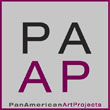« Features
Interview with Bill Viola
Bill Viola is a well-known new media artist, but above all a great painter. The Japan Art Association shares the same opinion: they awarded him recently one of the 2011 Praemium Imperiale Art Awards under the category of painting. On the occasion of the publication of the book When a Painting Moves… Something Must Be Rotten! (Edizione CHARTA), we spoke about and around painting, and the idea of ‘painting as moving image’.
By Paco Barragán
Paco Barragán -You studied in the experimental program at Syracuse University, alternating electronic music, video, and painting. How important was this education for your artistic vision and the use of video as a medium?
Bill Viola -One professor I had there, Jack Nelson, inspired me tremendously, and he also showed me that it’s just as important to break the rules as to make rules; I think that art in the twentieth century is all about that balance and interaction between breaking the rules and conforming to the rules.
P.B. -I would like to know if your experience in Florence as technical director of production of the video company ART/TAPES/22 formed your artistic practice in the sense that you got in touch with Medieval and Renaissance painting.
B.V. -Yes, absolutely. I went to Florence in 1974 to work in a one of the first video studios in Europe called ART/TAPES/22, and this studio was run by an extraordinary Italian woman named Maria Gloria Bicocchi. She created this studio under the belief that video was this new art form and the next most important step in the visual arts. And I came as a technician and was in charge of the camera, and it gave me direct contact with some of the great artists like Merz, Kounellis…, all the Arte Povera artists. And I was helping them make some of their first video works, which was an extraordinary privilege for a young man at that time. And so I was exposed to European culture and visited the churches that were tremendously influential because of the power of the architecture and the sense of emptiness that you could feel when you were inside such a huge building.
FLORENCE AND ITALIAN PAINTING
P.B. -One of your earlier works, The Greeting (1995) is literally based on Pontormo’s painting The Visitation. How did this work come about?
B.V. -The Greeting was an odd experience and possibly one of the strangest experiences I ever had in my art. At the time, and because of Florence, I had been interested in art history and particularly in the Renaissance. So it happened that I came across Pontormo, the great mannerist, and what fascinated me was how he shaped the figures. His color palette was extraordinary, almost surrealistic, like LSD… I began to look at his works, but not really wanting to copy or anything like that.

Bill Viola, The Greeting, 1995. Video/sound installation, color video projection on large vertical screen mounted on wall in darkened space, amplified stereo sound, 10’.
What happened was that I was driving to my studio one day and stopped at the traffic lights where I usually stop, and there were three women at the corner across the street and it was very windy, and their dresses were blowing and the leaves were blowing. So the light changed, I drove off and didn’t think about it. I arrived at my studio and when I walked in the first thing I saw was a color picture which I had photocopied of Pontormo’s The Visitation, and it was right there and I had just seen it on the corner! That really got me excited, and almost against my will I began to create a video piece out of this early sixteenth-century Italian painting. It was the most schizophrenic experience I ever had, and when it was shown at the Venice Biennale I still disliked the work on the opening day. But when people saw it, and everybody got excited by it, I was very surprised.
P.B. -Here we find a strong catholic meaning related to Mary being pregnant. And this brings us back to history painting and the religious tableaux. Another later work, Emergence (2002), is inspired by Masolino di Panicale’s Christo in Pieta, which is the dead Christ shown at the moment of resurrection.
B.V. -Emergence is a work that came directly out of my interest in emotions. My father passed away in 1999 and it was a big shock because my mother had died eight years previous to that, so that was a very difficult period for me. You realize you’re an orphan basically. I turned to my art to find not only confort and meaning, but also to keep moving, keep going forward and keep searching.
I came across this extraordinary piece by Masolino in an art book, and I was really touched by it. So, like the first time with Pontormo, I had no interest whatsoever in dealing with the actual themes of these religious works. I was much more interested in dealing with the iconography and the way that the pictures were structured. And this one, coming at a time after my father died, brought me deep into a feeling of spirituality without subscribing to any kind of particular religious tradition. I was really taken by the image, and that was my main focus, and in the act of bringing movement to it I realize I could create an image that wasn’t only a death but a kind of birth.
So I incorporated water into this image of a man rising out of a tomb, and as he rises up the water flows over the top, and when his head comes out you realize the thing is filled with water and it looks very much like an image of birth, which also involves water. I have to say that this is one of the best pieces that I made.

The Return, 2007. Color High-Definition video on plasma display mounted on wall, stereo sound, 47.5” x 28.5” x 4”, 5’ 51” Performer: Weba Garretson. Courtesy Fundació Sorigué, Lleida.
CHIAROSCURO AND SLOW MOTION
P.B. -Masolino and Jan van Eyck are known for introducing shadow to painting in a scale-consistent manner. In The Passions and later works, chiaroscuro technique becomes extremely important when shaping dualistic contrasts.
B.V. -Chiaroscuro artists learned from looking at statutes, and that takes us to ancient Greece and Rome. The human figure is one of the most important forms, and this representation of these people would be seen in the town square. Right now as I’m talking to you the shadows will have all moved, but it will be different just across my window and it will show me subtle changes and different sizes in it and different feelings to it.
And these different movements in the chiaroscuro became, finally, what it was in the early fifteenth century when perspective was introduced from the Middle East, particularly in Italy. Perspective is all about chiaroscuro in a sense, as it tries to make two-dimensional works three-dimensional.
P.B. -Another formal element in your work is ‘suspended time’. The use of ultra slow motion video enhances once again the painterly quality of the work.
B.V. -It had to do with a near death experience I had when I was a child. I fell in a lake during a holiday with my family when I was six years old. I didn’t hold on to my floater when I went into the water and I went right to the bottom and I experienced weightlessness and a profound visual scene that I never forgot: it was like a dream and blue and light, and I thought I was in heaven as it was the most beautiful thing I had seen. My uncle pulled me out.
Since then I became very aware of what we see in front of us, how fast things move, the color of the sky… It’s only the surface, the visual surface of experience, although we are beginning to see this is changing with 3-D and visual effects in cinema.
But for me the real surface is the inner being of the self, and it’s not necessary visual.
SPIRITUALITY AND RELIGIOUS SETTINGS
P.B -This brings us to the work The Return which is included in the exhibition “When a Painting Moves…Something Must be Rotten!“ at the Stenersen Museum in Oslo. This work, part of the Fundacio Sorigue Collection in Lleida, Spain, belongs to the “Transfigurations” series.
B.V -I was asked in 2007 to realize a work for the Venice Biennale outside the main program. So we found an incredible small chapel off San Marcos, Chiesa di San Gallo, that was deconsecrated 25 years ago. In that time I kept thinking about the presence of the dead. In Venice, but also in many places in Europe, the presence of the dead is very strong, but in America it’s not, as it is a very young country. This presence of the dead contrasts with our lives and our high-speed world, so I wanted to do something about it.

Emergence, 2002. Color High-Definition video rear projection on screen mounted on wall in dark room. Projected image size: 78.7” x 78.7”, 11’ 49”. Commisioned by The J. Paul Getty Museum.
The works in “Ocean without a Shore”, among them The Return from Fundacio Sorigue, are inspired by the Andalusian poet Ibn ‘Arabî and his writings. It’s basically about the spiritual as center of our lives and the idea of bringing it back to the domain of the self.
There was a new technology by that time, and we created a water wall, and I had twenty-five people passing through the water wall, shot with their clothes on with an old 1974 black-and-white surveillance camera-a very crude, low quality image. And when you passed through the water you had a second state-of-the- art High-Definition camera lined up with the first. So, when people walked through this waterfall they turned from black and white into color, as if they became human again, and that was a very emotional moment.
P.B. -In Lleida The Return was also installed by Fundacio Sorigue in the Seu Vella Cathedral.
B.V. -Yes, it was fantastic.
P.B. -Finally, we can conclude that on a formal level we also find resemblances with painting: the frame of the painting and the frame of the screen.
B.V. -Actually, when I was at the Chiesa di San Gallo and we were installing, I realized -which was shocking- that the two side altar pieces were exactly the same size as the 64-inch plasma screens and the centre altar piece was exactly the size of the 103-inch plasma; it was astonishing to see that they fit exactly into the places where the original paintings were.
NOTE
* This interview was published on the occasion of the publication When a Painting Moves…Something Must be Rotten!, Selene Wendt and Paco Barragán (Editors). Milan: Edizione CHARTA, April 2011, pp. 31-35.



































